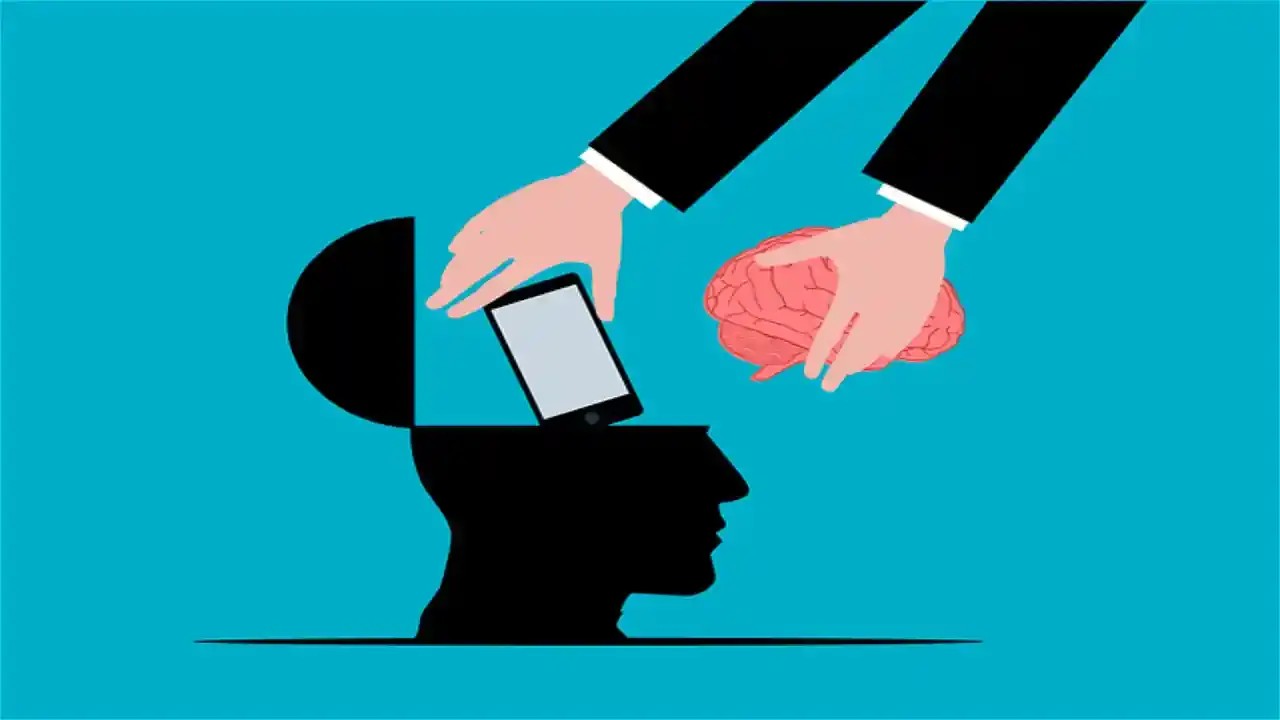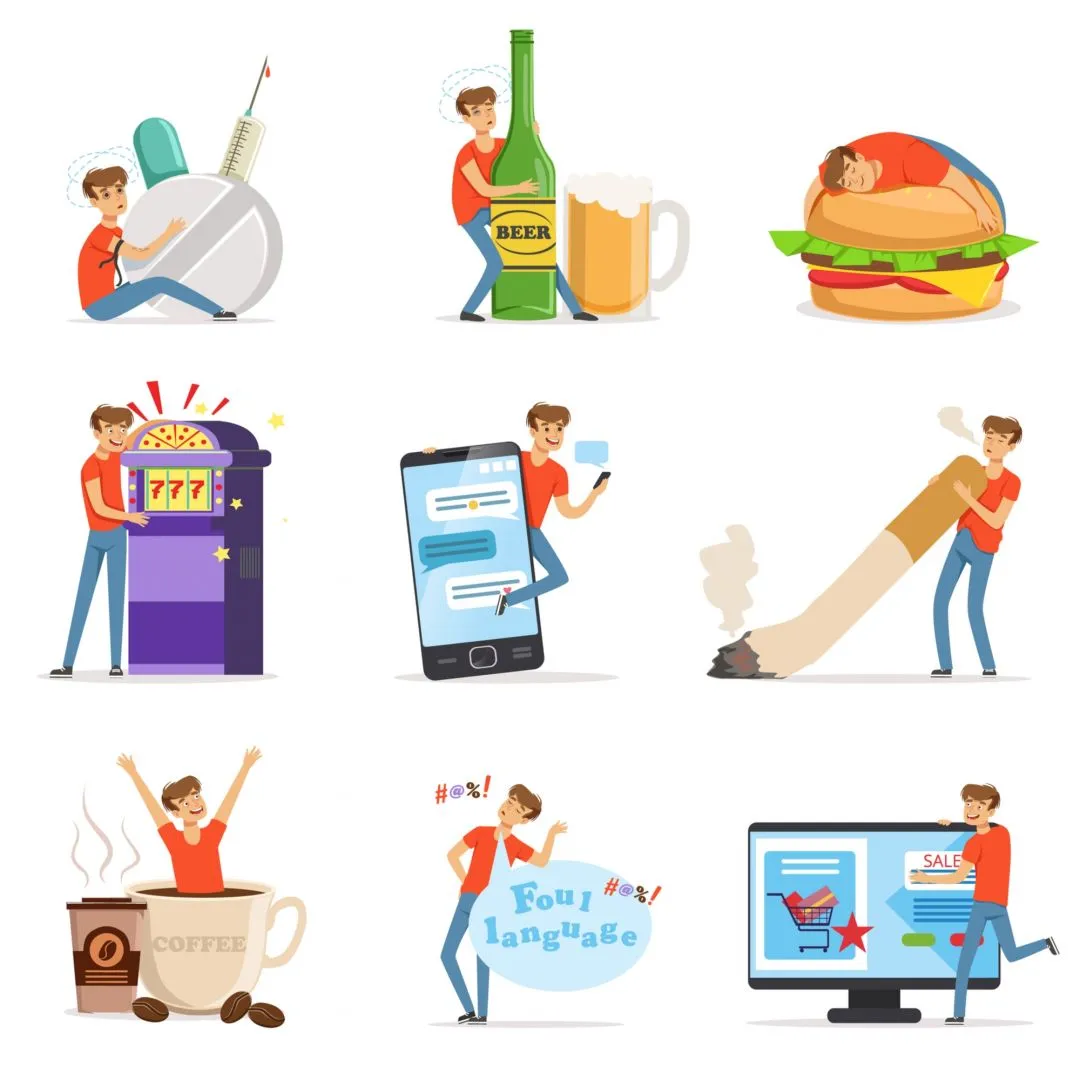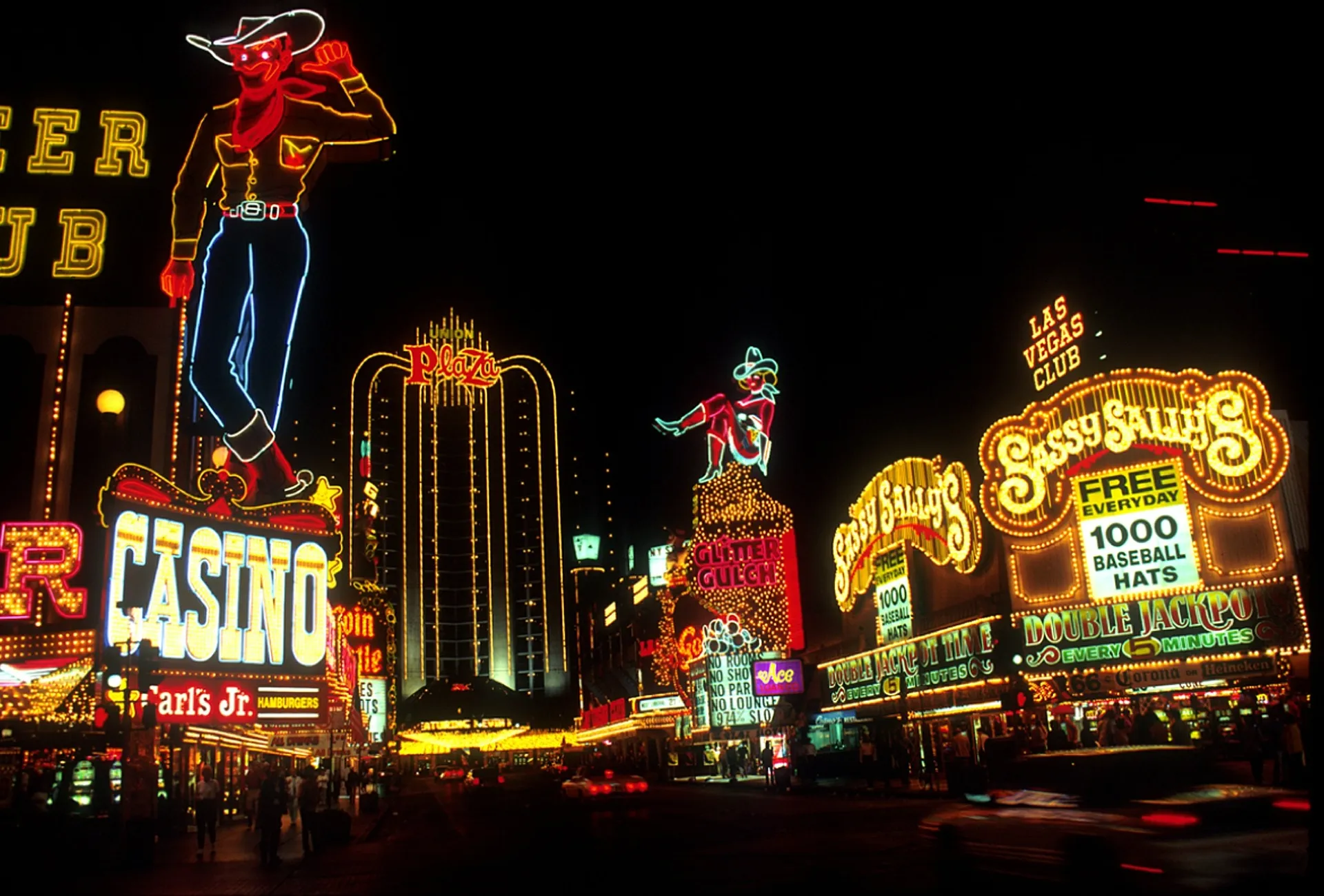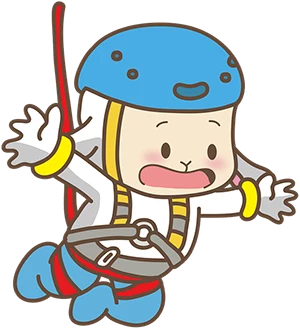
"It does not matter how slowly you go so long as you do not stop."
Confucius (551 BC – 479 BC) was a Chinese teacher, politician, and philosopher. By Simran Khurana (Updated March 18, 2017)
Addictions are a widespread global phenomenon. The thought that addiction is a brain disorder is unlikely, mainly due to its enormous scale. A brain disorder is a "malfunction" of natural mechanisms. There can be no fault in our body on such a scale! Therefore, the cause of addiction is probably not a "brain disorder."
This article presents a different approach to addiction and its energy flow reward mechanism, emphasizing strategies to increase the chances of a successful rehab from any addiction. Following self-healing principles, there is a close connection between addictions and the subconscious mind that often stores unresolved traumatic events.
Addiction - Introduction and Brainstorming.
What is the cause of addictions?
- Although addictions are widespread, there is no clear explanation of what causes them; this explains why weaning treatments are unsuccessful.
What is the definition of addiction?
- Link: Addiction (Wikipedia) "Addiction is a brain disorder characterized by compulsive engagement in rewarding stimuli despite adverse consequences." (Partial quote)
- Link: What is addiction? (American Psychiatric Association) "Addiction is a complex condition, a brain disease manifested by compulsive substance use despite harmful consequences."
- Although most definitions attribute addictions to a brain disorder, there is no uniform definition.
What is the prevalence of the phenomenon of addiction?
- Addictions are a widespread phenomenon; if we sum up the numbers, we will conclude that the total scope of all types of addictions reaches a vast percentage of a quarter to a third of the population!
What are the different types of addictions?
- The addictions tend to be divided into 2-3 main groups. Addiction to substances such as drugs and alcohol. Or behavioral addictions such as eating, sex, and games. Sometimes, a third category of the disorder is also added.
What is the reward mechanism that drives addictions?
- The reward mechanism of addiction bypasses logic and persuasion. It causes damage to the addict and sometimes the environment, without the addict being able to stop, even though they are aware of the damage! (A seemingly paradoxical situation that causes painful conflicts with the immediate environment)
Common addictions.

The World's Most Common Addictions:
Link: (The Dawnrehab.com)
- Tobacco addiction.
- Alcohol addiction.
- Marijuana addiction. (Drug addiction)
- Painkiller addiction. (Drug addiction)
- Cocaine addiction. (Drug addiction)
- Heroin addiction. (Drug addiction)
- Gambling addiction.
- Sex addiction.
- Internet addiction!
Note: I believe all four drug addictions are one category of addictions; however, I expected to find obesity on the list.
The innovative Self-healing approach to what is an addiction.
What is Addiction?
-
Addiction is a compulsive, repetitive action that, over time, causes harm to the addict or the environment (or both) that the addict is aware of, except that they do not control the addiction. The reward mechanism of addiction is far more potent than any means of logic and persuasion.
Is it logical to expect a common denominator between all types of addictions?
- All addictions must have a common denominator. (Uniform laws govern nature.)
Is addiction a disorder or a mental illness?
- Addiction is not a mental disorder or illness; it expresses unresolved mental traumas that the subconscious mind cannot contain. When the traumas break out, they create anomalies in the form of addictions. (The high rate of the population suffering from addictions implies that it is not a disease or disorder.)
The Genetic factors.
- "Epidemiological studies estimate that genetic factors account for 40–60% of the risk factors for alcoholism." (Wikipedia)
- The seemingly high weight attributed to genetics as a cause of alcoholism, in my opinion, reflects a methodological problem. Children of parents or drinking family members suffer more from home traumas than others. It is not necessarily the result of genetics with an alcohol predisposition.
- Heredity may have some effect, but environmental and social factors are the main reasons. There is no unequivocal finding that addiction is hereditary!
Why do more men suffer from alcoholism and over-smoking than women in most places globally?
- Several sociological and social theories reflect different expectations between women and men. The differences between men and women are not explained by genetics. Female hormones probably have a substantial emotional and maternal effect, especially on women of childbearing age. The significant gaps between women and men only reinforce the assertion that addiction is not only a physical and physiological phenomenon but a mental-spiritual one.
Does accessibility to the cause of addiction make a significant contribution to addiction?
- Accessibility makes it easy to create a first-time user experience. It has a powerful effect in childhood and adolescence, but accessibility alone is not the cause of addiction; there must be a real motive and need for it, explicit knowledge that it is harmful.
- Children of smokers and drinkers are more exposed, but the explanation is more profound than the question of accessibility. Other children also often have the option of obtaining alcoholic beverages and cigarettes. The potential mental trauma, on average, in the homes of alcoholics is higher.
Is addiction a quantitative definition?
- The definitions of being an addict are not quantitative but mainly of the degree of ability to demonstrate restraint over time. Simultaneously, threshold indices have sometimes been set to diagnose addictions that may suggest addiction. (Such as BMI for obese people.)
The explanation of the Self-healing approach to all Addictions.
- All addictions allow the body to improve the energy flow in the specific blocked energetic center/s. (At the expense of damage to many organs and systems.)
The reward mechanism of addictions is chemical and primarily an energetic tool for conserving the critical life-force energy needed for survival.
- Any addiction not only manifests itself in certain chemicals but also, mainly, as a psycho-energetic phenomenon. Releasing traumatic, unresolved issues from the past that caused addiction is far more complicated than detoxification from addictive substances.
- Therefore, rehab from any addiction should eliminate the addiction's primary factor. (That is, to open the respective life-force energy blockages.)
Why don't addicts respond to persuasion?
- Addicts are not unreasonable people, nor are they self-destructive. In addition, the subconscious partially paralyzes reason; thus, persuasion is not a helpful tool for healing addiction.
The implementation of the KübKübler-Rossdel regarding all severe, harmful addictions.
Link: KübKübler-Rossdel – Explains the behavior of personal loss.
The five stages of the KubKübler-Rossdel are Denial, Anger, Bargaining (only applicable in life-threatening situations), Depression, and Acceptance.
Addicts suffering for many years pass through these four stages of the behavioral grief model, known as the KubKübler-Rossdel. (Similar to chronic patients.)
- Initially, the KübKübler-Rossdel was only concerned with the stages of death and dying. KübKübler-Ross'sdel was expanded to include any personal loss. No doubt, being a long-term alcoholic has properties of grief and loss.
- From my experience, what prevents making lifestyle changes is often Denial, Anger, and Depression.
- Reaching acceptance as fast as possible is essential for elevating the spirit and gaining needed energy. It is necessary not to suppress the problem; addiction withdrawal requires determination, perseverance, and strong willpower.
- Real hope would give anyone the strength to endure all the accompanying suffering and pain in the withdrawal process.
- Standard psychological therapies cannot penetrate the conscious mind and are useless tools for treating addictions.
- The main difficulty in most rehab programs stems from the need to release from the subconscious mind the specific traumatic unresolved event that caused the energy blockages, which created the need for addictions. Cleansing the body of the addictive toxins is relatively easy compared to the energy part, which does not get any attention, mainly because Western culture does not acknowledge the existence of life-force energy.
How does the fear mechanism, in cases where the addict identifies a life-threatening situation, work to stop or weaken the addiction?
- Fear is not an emotion but an instinct inherent in every living being. Addicted smokers and alcoholics, in cases of tangible danger to life, often tend to stop drinking alcoholic beverages and smoking. The explanation is that fear is a powerful survival mechanism that, as long as fear exists, bypasses the effect of addiction.
- In drug addicts (hard drugs and hallucinogens), the fear mechanism is paralyzed, so even drug addicts who realize they are in mortal danger usually cannot stop taking drugs alone!
Releasing traumatic, unresolved events from the past that caused the addiction is the key to successful weaning.
Addicts are not unreasonable people, nor are they self-destructive. In a state of addiction, the subconscious partially paralyzes reason.
- In childhood and adolescence, the mind is still unable to withstand mental traumas associated with experiences of rejection, abandonment, distance, jealousy, and so on. The ability of the subconscious to perceive and store unresolved traumatic events is minimal. Outbreaks at these ages are often not in chronic morbidity but addictions! Curiosity and accessibility are just sub-factors.
Recommended link: The subconscious mind is the bridge that connects the mind to the body, making it spiritual.
The social and economic harms of addictions are enormous. Apprehending the causes of addictions is vital! Unfortunately, Psychotherapy cannot penetrate the subconscious.
Link: Psychotherapy (Wikipedia)
Why do people tend to go to psychotherapy? (partial list)
- Many people need the attentive ear of a neutral person, an experienced expert.
- Resolving personal or family conflicts.
- Couple counseling.
- Personal crises of all kinds.
- People are lonelier than ever in the modern age. The psychologist is an attentive, empathetic, supportive, and understanding figure.
Are psychological treatments unnecessary in cases of attempts to reconstruct unresolved traumas?
- Psychological treatment may provide vital support, but it is often unable to get to the root of the problem and eliminate it, regardless of the number of treatments. The subconscious is a closed virtual safe.
Access to the subconscious is blocked! Routine psychology techniques cannot penetrate the subconscious mind. Therefore, psychotherapy is unsuitable for weaning therapies. However, they can strengthen the addict and assist family members in the process.
The (unconventional) perception of the human body as a dual, physical, and energetic entity is essential to rehabbing addiction.
Link: Self-Healing Medicine – Main principles and guidelines.
The (unconventional) perception of the human body as a dual, physical, and energetic entity is essential to achieving full obesity recovery.
- "To live is to have Qi in every part of your body." To die is to be a body without Qi. For health to be maintained, there must be a balance of Qi."
What are the characteristics of all addictions?
- All addictions allow the body to improve the energy flow in the specific blocked energetic center/s. (At the expense of damage to many organs and systems.) Therefore, rehab from addictions should eliminate the primary factor that created the need for addiction (That is, to open the life-force energy blockages).
- Chemical rehab from neuro psychotic and other chemicals is the relatively easy part. The incredibly challenging part is the release of the life-force energy blockages.
How do we analyze the blocked energy centers? (We need the energy center chart with the respective emotions involved.)
The seven human Chakras (Energy Centers) and organs represent respective influential emotions. (The emotional settings I brought are slightly broader.)

General and Introduction - The concept of energy centers. (Chakras)
Only traumatic, non-resolved mental and spiritual events from our past may block the life-force energy. (Traumatic resolved mental and spiritual events do not block the energy centers.)
- These principles come from traditional Indian medicine (Ayurveda) and Chinese medicine, balancing the body. Western medicine completely ignores the human body's energetic being and misses an opportunity to deeply understand many unexplained phenomena.
The analysis refers to gambling addicts, not those occasionally visiting the casino!

Mental-energetic analysis of gambling addiction.
The rehab process requires the removal of the traumatic event from the subconscious. (Patient cooperation is needed.) Therefore, it is advisable to target traumatic events and detect them effectively. Since I have individually reviewed three common addictions, I will illustrate how to locate the trauma source for another addiction - gambling.
Energetic analysis of gambling addiction.
- Gambling activity activates the eyes, brain, and other senses. Chakra 6 is the required association regarding energy channels (chakras).
- The emotional blockage attributed to center six should be related to awareness. (Center 6 is the third eye chakra.) In greater detail, it refers to Intuition, a sense of purpose, and direction in life.
- Gambling addicts from an economic background of scarcity may also develop an energy block in the base chakra, number 1. Trust, belonging, money, and financial security are relevant emotions.
What can be learned from this very simplistic analysis?
- A gambling addict's characteristics are characteristics of an adult who may be disappointed with a career, job satisfaction, marriage, or inability to meet their expectations. (Gamblers are brilliant people)
- Indeed, most compulsive gamblers are not children or adolescents! Although online access to gambling exists.
- Gambling is often illegal for young people under a certain age, but the main explanation is not accessibility!
Why is it important to know which energy center the addiction is related to?
- Locating unresolved traumatic events can be exhausting, so it is best to start the search during the relevant period of life.
Only a few individuals can penetrate their subconscious minds, so most need the help of experts.
Self-healing withdrawal methodology for a successful rehab from any addiction.
The events that caused the addiction in the first place are usually buried deep in the subconscious, which stores unwanted memories, sometimes from the very distant past.
- The subconscious mind is part of the mental defense mechanism. Extracting events into the conscious realm allows them to be released. (There is no need to forget.) The best withdrawal program should integrate body, mind, and spirit altogether.
Critical - Mental and Spiritual. (The two leading techniques can be combined.)
Link: Mental and Spiritual Empowerment.
Releasing traumatic non-resolved events from the past - Through Self-psychoanalysis.
- Yoga and meditation are at very high levels. (Challenging)
- Support groups sometimes have a meditative effect through catharsis. (Depends on the facilitator and group participants.)
- Success in releasing traumas from the subconscious through support groups requires openness and courage to penetrate the most protected and difficult places. The catharsis (liberation of the mind) is an action on the subconscious.
Releasing traumatic unresolved events from the past - Through experts.
- Hypnotists (qualified) can usually pinpoint the source of the initial addiction and treat the problem to lower the chances of returning to drinking alcohol.
Acupuncture is a partial replacement that releases physical distress, without touching the subconscious.
- Acupuncture manages to cope differently, without poking around, but opening the blocked meridians that affect the life-force energy causing the alcohol addiction.
Desirable - Social and communicative. (It is advisable to combine social and mental-energetic activities.)
All activities that combine company and communication are desirable.
- Social activity of any kind is especially recommended. Detachment and remoteness may create isolation and depression.
- Loners, finding a meaningful relationship with a love and sex partner can significantly change your life! (Communication, love, and pleasure at the same time.)
- A deep emotional relationship charges life-force energy and helps recovery.
Physical and pharmaceutical. (Drugs that penetrate the subconscious)
- Pharmacotherapy is appropriate for complex situations and only for short periods.
The active substance MDMA is in the Ecstasy drug. (Not approved for use.)
- MDMA may help with additional supportive care in releasing traumatic events. Studies have shown an effect on three brain neurotransmitters. Reactions to the MDMA drug were increased pleasure, reduced sense of fear, love, and acceptance of the environment, decreased criticism, and increased emotional openness.
- I have to point out that I am usually against using drugs; this is an unusual case where a drug may treat the cause rather than the symptom. (MDMA is currently not approved for use.)
Which is the best strategy for addiction withdrawal?
In addition to the physical rehab, combining the mental-energetic and social parts is most desirable.
- It is essential to emphasize that treating alcohol addiction by chemical and pharmaceutical means without psycho-energetic and complementary social action has a low chance of success.
I recommend contacting a qualified hypnosis specialist for those with previous alcohol withdrawal failures. It is essential to know that rehab is a process that combines body, mind, and spirit.
Addiction rehab often requires a significant lifestyle change. Family and friends, love, and support are essential.
- The patient needs encouragement, trust, and logistical assistance in a dramatic lifestyle change. Without love, support, and understanding of the difficulty, the chances of success are much lower.
- The immediate environment should see success as a shared project for everyone. Success is a group result.
- Looking at the rehab patient as a loser is wrong.
Undoubtedly, the assistance of the spouse, family, and friends in weaning involves a significant sacrifice.
- Success in the weaning process is challenging without the love and support of the spouse, friends, and family. The rehab should be carried out so that regular visits are accessible.
- The most appropriate place to manage the detox process is one that radiates affinity, warmth, and love. (The house is sometimes emotionally charged and, therefore, unsuitable.)
Weaning treatment at rehab centers has its advantages but also disadvantages.
Engagement, support, and love for the spouse, family, and friends during the health farm's care are critical to success. The therapist team's role is to harness everyone into the process!
Advantages.
- A quiet and calm environment with no temptations and no alcohol available.
- Supportive professional staff.
- Other patients in a similar state generate empathy.
Disadvantages.
- It may mark the rehab patient as a social and economic burden.
- There is a danger where the rehab patient feels lonely and abandoned by family and friends and deals alone!
Addicts often need social rehabilitation, love and support, and often health rehabilitation.
The various addiction rehabilitation processes are not uniform because the social and health damages they create are entirely different. I extensively reviewed three common addictions (alcohol, smoking, and food and eating addiction). The links are attached: Link: Addiction-related illnesses.
- In my opinion, the energetic weaning process is much more challenging than physical rehabilitation.
Addictions create crises, anger on the part of family members, because the addict is perceived as a person with a self-destructive instinct. It is essential to emphasize that without support, love, and forgiveness, it is very difficult to recover from severe and prolonged addictions.
Summary, conclusions, and recommendations.
This article presents a different approach to addiction and its reward mechanism, emphasizing strategies to increase the chances of a successful rehab from any addiction.
The explanation of the Self-healing approach to all Addictions.
- All addictions allow the body to improve the energy flow in the specific blocked energetic center/s. (At the expense of damage to many organs and systems.)
The reward mechanism of addictions is chemical and primarily an energetic tool for conserving the critical life-force energy needed for survival.
- Any addiction not only manifests itself in certain chemicals but also, mainly, as a psycho-energetic phenomenon. Releasing traumatic, unresolved issues from the past that caused the addiction is far more complicated than detoxification from the addictive substances.
- Therefore, rehab from any addiction should eliminate addiction as the primary factor. (That is, to open the respective life-force energy blockages.)
Why don't addicts respond to persuasion?
- Addicts are not unreasonable people, nor are they self-destructive. In addition, the subconscious partially paralyzes reason; thus, persuasion is not a valuable tool for healing addiction.
The implementation of the KübKübler-Rossdel regarding all severe, harmful addictions.
Link: KübKübler-Rossdel – Explains the behavior of personal loss.
The five stages of the KubKübler-Rossdel are Denial, Anger, Bargaining (only applicable in life-threatening situations), Depression, and Acceptance.
- Addicts suffering for many years pass through these four stages of the behavioral grief model, known as the KubKübler-Rossdel. (Similar to chronic patients.)
- Initially, the KübKübler-Rossdel was only concerned with the stages of death and dying. KübKübler-Ross'sdel was expanded to include any personal loss. No doubt, being a long-term alcoholic has properties of grief and loss.
- From my experience, what prevents making lifestyle changes is often Denial, Anger, and Depression.
- Reaching acceptance as fast as possible is essential for elevating the spirit and gaining needed energy. It is necessary not to suppress the problem; addiction withdrawal requires determination, perseverance, and strong willpower.
- Real hope would give anyone the strength to endure all the accompanying suffering and pain in the withdrawal process.
- Standard psychological therapies cannot penetrate the conscious mind and are useless tools for treating addictions.
- The main difficulty in most rehab programs stems from the need to release from the subconscious mind the specific traumatic unresolved event that caused the energy blockages, which created the need for addictions. Cleansing the body of the addictive toxins is relatively easy compared to the energy part. Still, it does not get any attention, mainly because Western culture does not acknowledge the existence of life-force energy.
The events that caused the addiction in the first place are usually buried deep in the subconscious, which stores unwanted memories, sometimes from the very distant past.
- The subconscious mind is part of the mental defense mechanism. Extracting events into the conscious realm allows them to be released. (There is no need to forget.) The best withdrawal program should integrate Body, Mind, and spirit altogether.
Self-healing is like "Performing miracles." Every human being has this capability. It just needs to be revealed.
Link: Preparations before starting self-healing therapies.
- Following the principles and guidelines of self-healing medicine will cure the entire body, mentally and physically.
- The main drawback of self-healing is the need for changes in lifestyle and habits. However, the transformation is enormous in every aspect.
- After symptoms improve, continuing a properly controlled lifestyle and diet is essential.
It may be almost impossible for some, but it can be done! May God be with you.
Whoever overcomes their addiction will also be able to recover healthily and socially. Success takes perseverance, willpower, and great determination, but the result is personal empowerment and dramatic change for the better in every possible aspect. Unfortunately, there are no shortcuts.

Addicts know that they are harming themselves and the environment. Therefore, there must be a reward mechanism, bypassing logic that drives the addiction.

